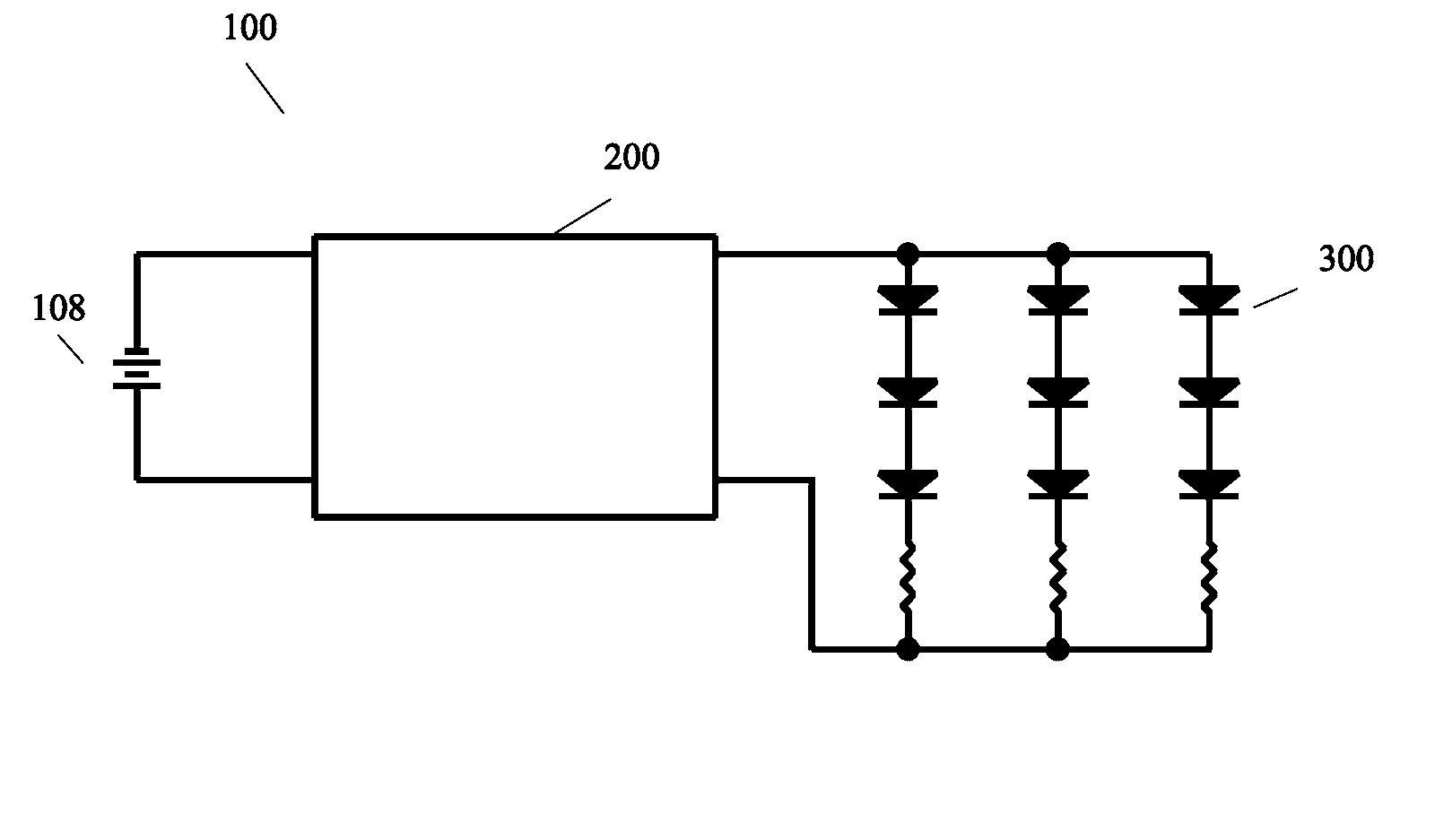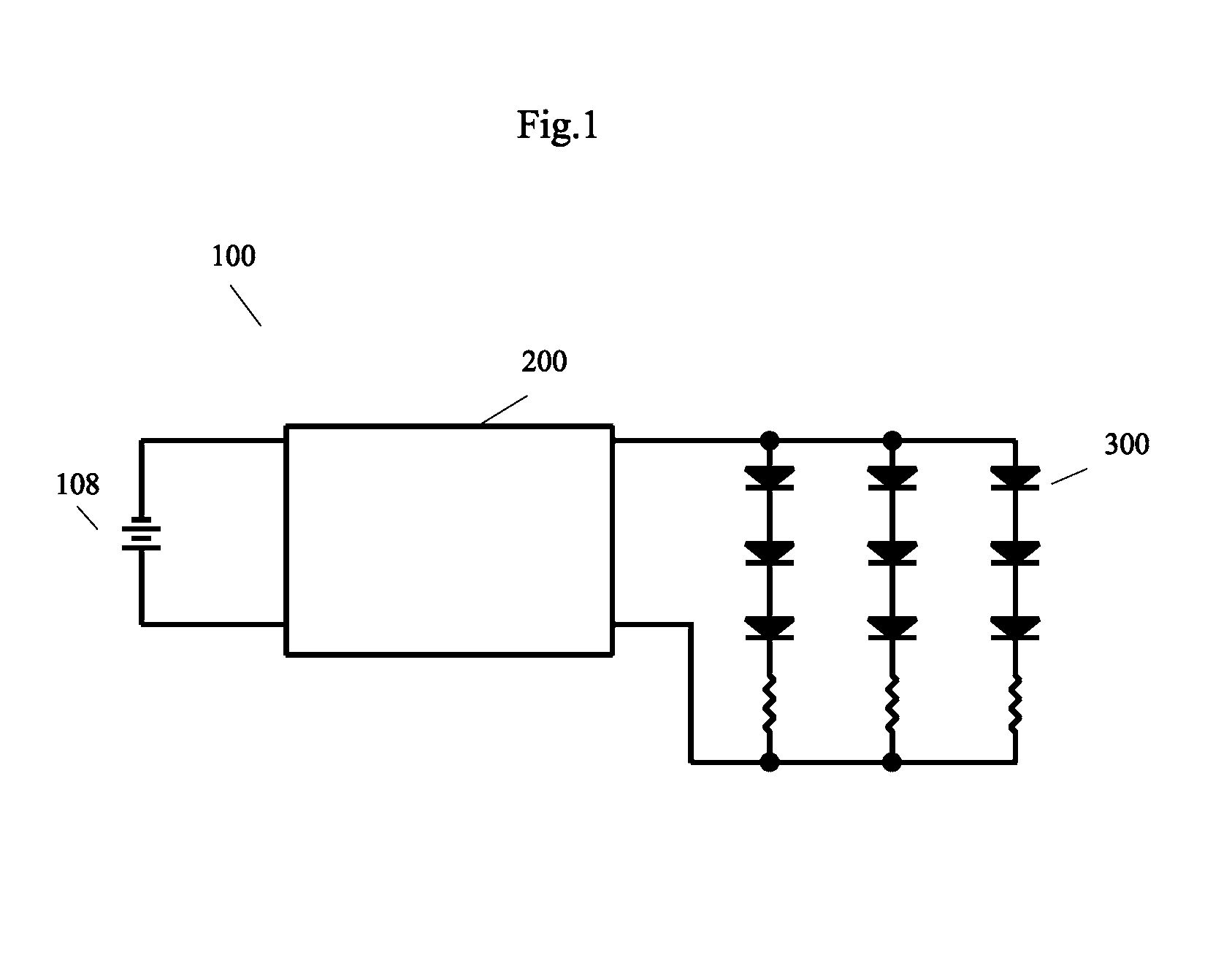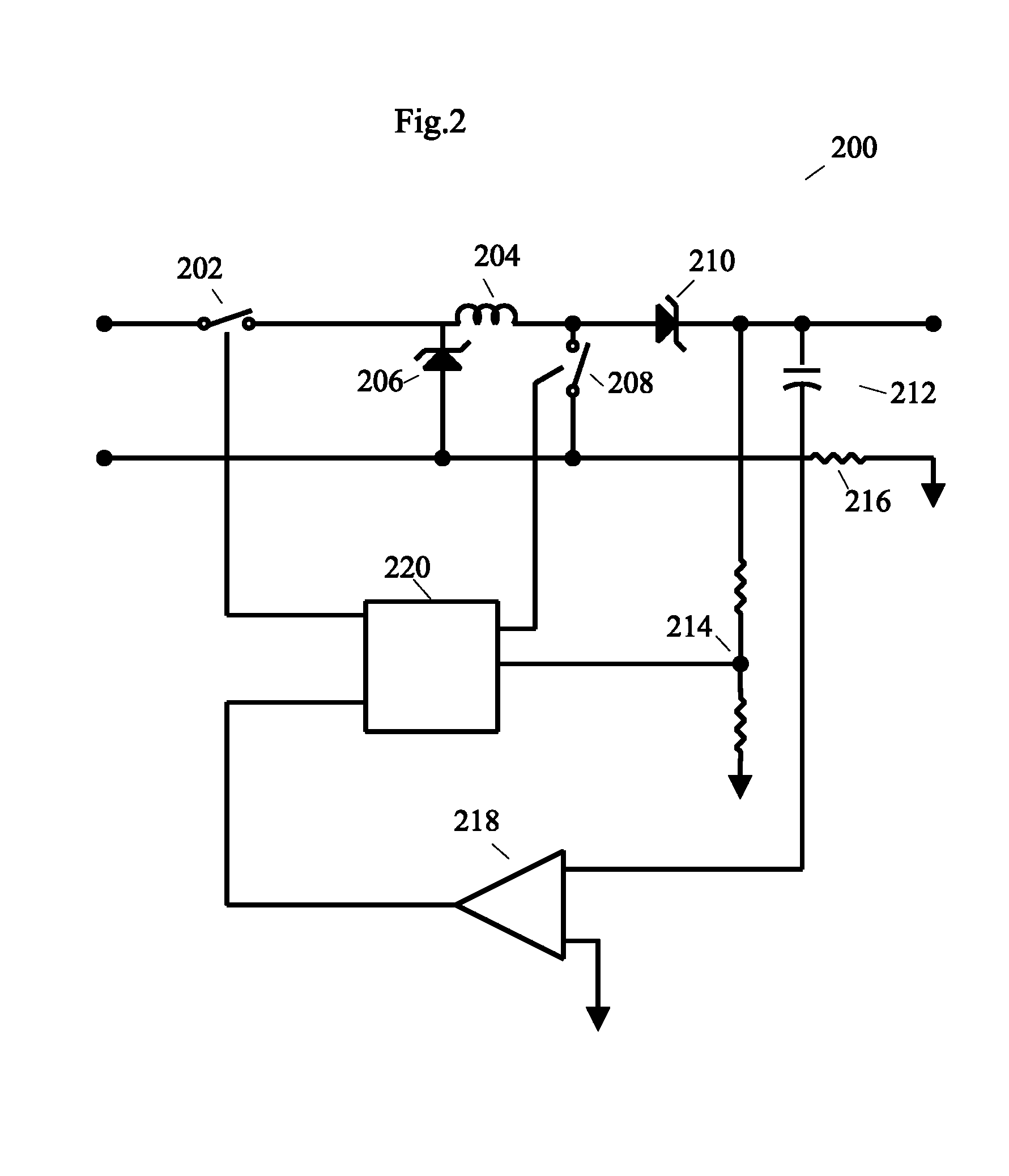Voltage adapter for a battery-powered camera system
a battery-powered camera and voltage adapter technology, applied in the field of electric power supplies, can solve the problems of inability to connect to anything other than 12 volt batteries, inefficient lamps, and inability to adjust brightness, etc., to achieve the effect of reducing brush wear, reducing the operating voltage of the motor, and reducing the wear of the brush
- Summary
- Abstract
- Description
- Claims
- Application Information
AI Technical Summary
Benefits of technology
Problems solved by technology
Method used
Image
Examples
Embodiment Construction
Before explaining the present invention in detail, it is important to understand that the invention is not limited in its application to the details of the construction illustrated and the steps described herein. The invention is capable of other embodiments and of being practiced or carried out in a variety of ways. It is to be understood that the phraseology and terminology employed herein is for the purpose of description and not of limitation.
Referring now to the drawings, wherein like reference numerals indicate the same parts throughout the several views, a typical ballasting DC-DC converter for power LED lamps is shown in FIG. 1. Preferably, converter 100 comprises boost regulator 200 for powering and ballasting lamp array 300. Generally, converter 100 is powered by a battery, i.e., battery 108, but may also be powered by a power supply, for example a wall plug-in type supply.
Referring to FIG. 2, boost / buck regulator 200 comprises: an inductor 204; a switching circuit 22...
PUM
 Login to View More
Login to View More Abstract
Description
Claims
Application Information
 Login to View More
Login to View More - R&D
- Intellectual Property
- Life Sciences
- Materials
- Tech Scout
- Unparalleled Data Quality
- Higher Quality Content
- 60% Fewer Hallucinations
Browse by: Latest US Patents, China's latest patents, Technical Efficacy Thesaurus, Application Domain, Technology Topic, Popular Technical Reports.
© 2025 PatSnap. All rights reserved.Legal|Privacy policy|Modern Slavery Act Transparency Statement|Sitemap|About US| Contact US: help@patsnap.com



